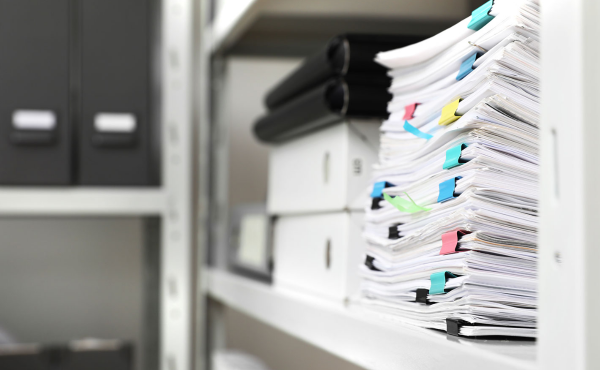Why low-quality paper can lead to unwanted effects
Copy paper may seem all the same, but in reality, there are different sizes, weights, colors, and quality levels, which can affect the output of your print job. Other things to consider such as, paper handling, storing, and loading into the MFP can also affect the quality of your print job and ease of use with the MFP.
Here we will discuss some issues we've found with lower quality paper, as well as proper paper storage & handling, and some tips for loading paper into the MFP.
You may think the cheapest priced paper, is just the same, or will work just the same as a paper that costs a little more, but with the cheap price, you will often also find lower quality.
Some Issues with using lower quality paper in the MFP or printer include:
- Curling
- Brown Spots
- Glue on edges from wrapping
- Inconsistent quality overall
- See more issues in high-volume devices
- See more issues when two-sided printing and stapling finishing
Proper Paper Storage & Handling Tips:
The temperature and humidity of the area where paper is stored and used can have a definite influence on how the paper performs during any given imaging process. The following are some recommendations:
- Paper should be stored in the original carton and ream wrappers, until ready to use
- Store paper on shelves off the floor if possible
- In areas of high humidity, store partially used reams in plastic wrap or bags
Paper Loading
Loading paper into your printer or copier seems pretty straightforward, right? Many people just open up the package and pop the paper in the tray. Well, it turns out that this might not be the best way to do it. Loading paper properly can ensure that your printer or copier operates smoothly and gives you the best printing results.
Here a couple of tips for loading paper into the MFP:
Eliminate Curl
Do you have problems with curled sheets after you print? Some paper, such as Hammermill paper, is manufactured with a slight curl built into the sheet. When loaded properly that curl can help the paper feed correctly. That's why it's important to notice which side is up when you load the paper into the tray.
As paper travels through a copier or a printer, it tends to curl toward the heat of the fuser. If you load the paper wrong side up, you will get more curl. Load the paper as shown on the back of the ream. You want to print on the side facing the back seam of the wrapper. This way, the heat of the fuser counteracts the manufactured curl, and you end up with a flatter sheet of printed paper.
Get Some Air In There
Fluff your paper before you load it into the tray. Most paper is packaged at the same time it's cut. This high-speed process tends to eliminate the air between the sheets of paper, making it harder for the printer to load only one sheet at a time. To add the air back in, lightly fluff or fan the paper before you load it into your printer. This helps the sheets to feed smoothly.
Learn some pro tips for loading paper into MFPs from our paper expert and service tech Mark in the video below.
Rhyme's recommendation to our customers for high quality at a good value is:
Universal Copy Paper, 92 Bright, 20 lb, 8.5 x 11, White, 500 Sheets/Ream, 10 Reams/Carton
UNV21200
- Compatible with all office equipment.
- Works with copiers, laser printers, and fax machines.
- Great for general office copying and printing.
- Reliable choice for high-volume copying, reports, documents, and correspondence.
- Acid-free for archival quality.
